Approval Profiles Overview
This documentation outlines how to configure Approval Profiles in Exsited, an essential feature used to define rule-based approval workflows. These profiles ensure that designated actions—such as creating purchase orders or updating invoices—are properly authorised by the appropriate user or group, thereby maintaining internal control and compliance.
Where to Find It
Navigation Path:
Settings → Approvals → Approval Profiles
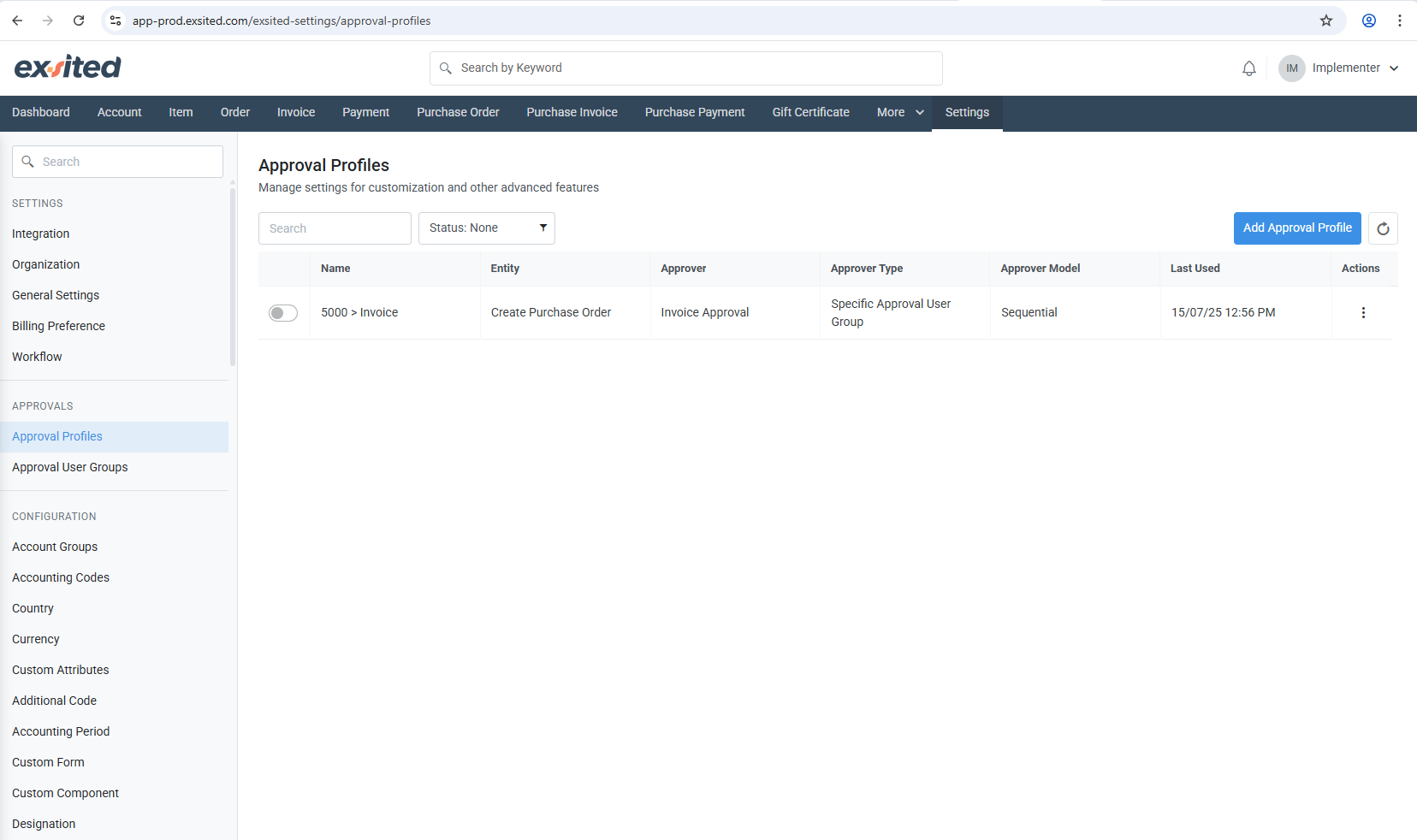
Adding a New Approval Profile
Click the Add Approval Profile button to begin configuring a new approval rule.
Profile Identification
| Field | Description |
|---|---|
| Name | A mandatory internal reference name. It should be unique and clearly represent the purpose of the profile (e.g., PO_Above_5000_AU). |
| Display Name | A user-friendly name that appears in the UI for quick identification (e.g., Purchase Orders over $5,000). |
| Add a Description | Tick this box to optionally include further details or business rationale for this approval profile. This helps future admins understand its context. |
| Applies To | Select the module this approval rule relates to. Common options include: – Account – Invoice – Order – Payment – Purchase Order – Purchase Invoice |
| Select a Function | Select the specific system function that will trigger the approval process, such as: – Create – Edit – Submit – Delete |
| Select Approval Required Provider | (Optional) – Choose a dynamic source for determining the approval requirement. Leave as "None" if not applicable. |
| Approver Type | Defines the method used to assign approvers. Options include: – Specific User – Select a named user manually. – User Group – Choose a predefined approval group. – Role-Based – Assign based on system role, such as Finance Manager. – Manager of Initiator – Automatically assigns the initiator’s direct manager. |
| Approver | Choose the user, role, or group based on the selected approver type. |
| Approver Model | Determines how the approval will flow: – Sequential – Each assigned approver must approve in the set order. – Parallel – All approvers are notified simultaneously and can act independently. |
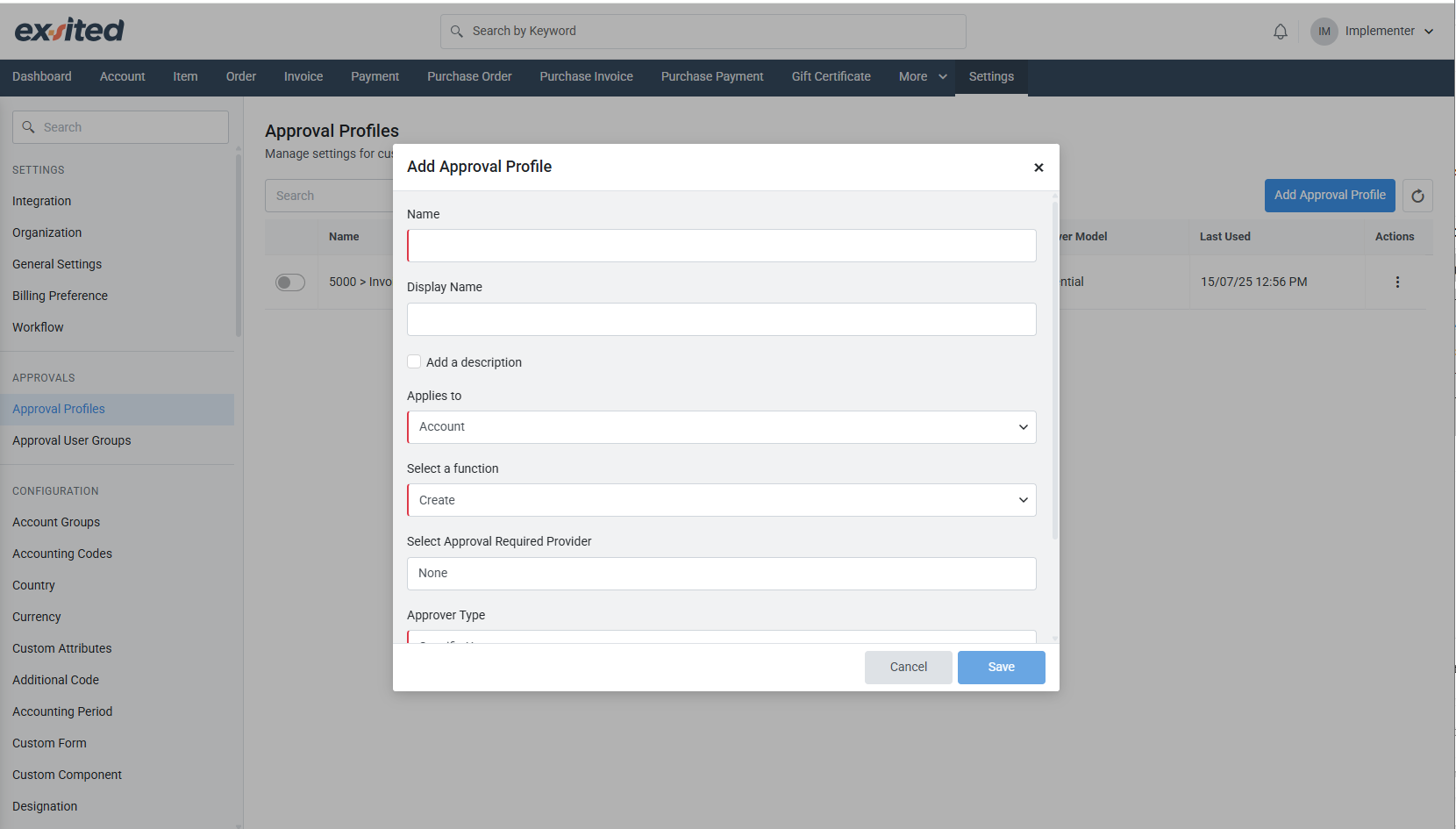
Managing Approval Profiles
All created profiles appear in a list view with key information. This section allows users to monitor and update existing approval rules.
Profile Table Fields
| Column | Meaning |
|---|---|
| Name | The internal or display name of the approval profile. |
| Entity | The module and action the approval applies to (e.g., “Purchase Order – Create”). |
| Approver | The assigned user, group, or role responsible for approving. |
| Approver Type | Shows whether the approver is a specific user, group, or system role. |
| Approver Model | Indicates the approval flow type (Sequential or Parallel). |
| Last Used | The last date and time the approval profile was triggered. |

Actions Menu (︙)
Click the ellipsis menu to perform the following actions:
- Edit – Modify the profile details.
- Copy – Duplicate the profile for quicker setup.
- Delete – Remove the profile.
- Configure Approval – Define conditional logic to control when the approval is activated.
.png)
Configuring Approval Rules (Advanced Logic):
Click Configure Approval to define conditional logic that determines when an approval is required. This section consists of four tabs.
Tab 1: Criteria (Trigger Conditions)
Used to specify conditions under which the approval is required.
| Feature | Functionality |
|---|---|
| To Enter / Do Not Enter | Choose whether the approval process should trigger when the criteria are met or when they’re not. |
| Conditions | Add one or more conditions based on fields like: – Status – Operational Status – Currency – Supplier Invoice ID – Issue Date or Due Date |
| Logic Operators | Combine conditions using “AND” / “OR”. |
| Operators | Use comparators like “Equals”, “Has Value”, “Greater Than”, “Less Than”, etc. |

Tab 2: Pre Checks (Validation Rules)
Pre-checks are validation conditions applied before the approval process starts.
| Feature | Functionality |
|---|---|
| Configure Criteria | Similar to the “Criteria” tab but focused on validation. Ensures correct data is in place before routing approval. |
| Configure Script | Advanced users can use scripts to enforce complex logic (if scripting is enabled in your Exsited setup). |
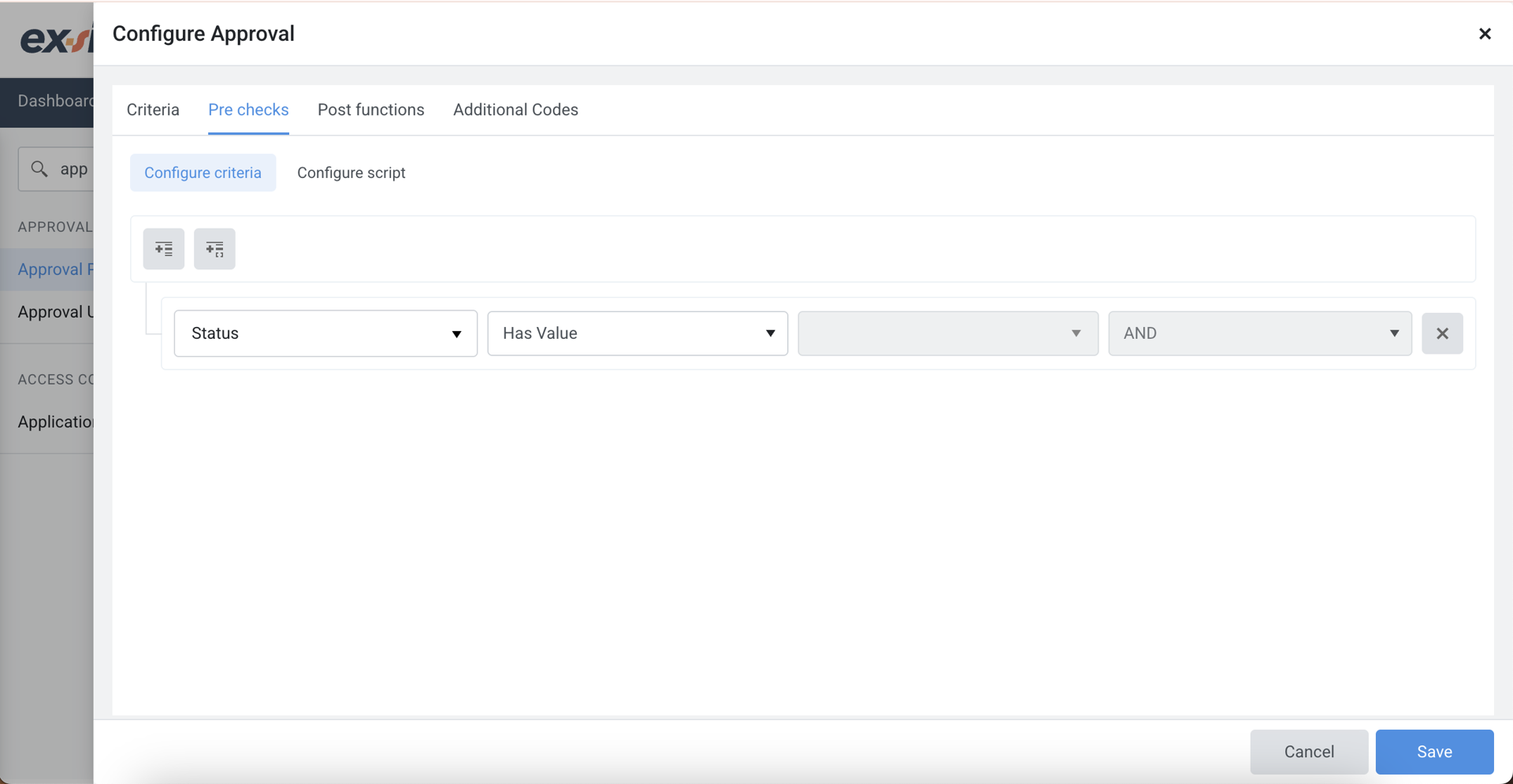
Tab 3: Post Functions (After Approval Actions)
This section allows system-defined actions to be automatically triggered after approval is completed.
Common post functions include:
- Changing a record’s status to “Approved”
- Sending automated notifications to stakeholders
- Initiating the next process step (e.g., invoice generation after PO approval)
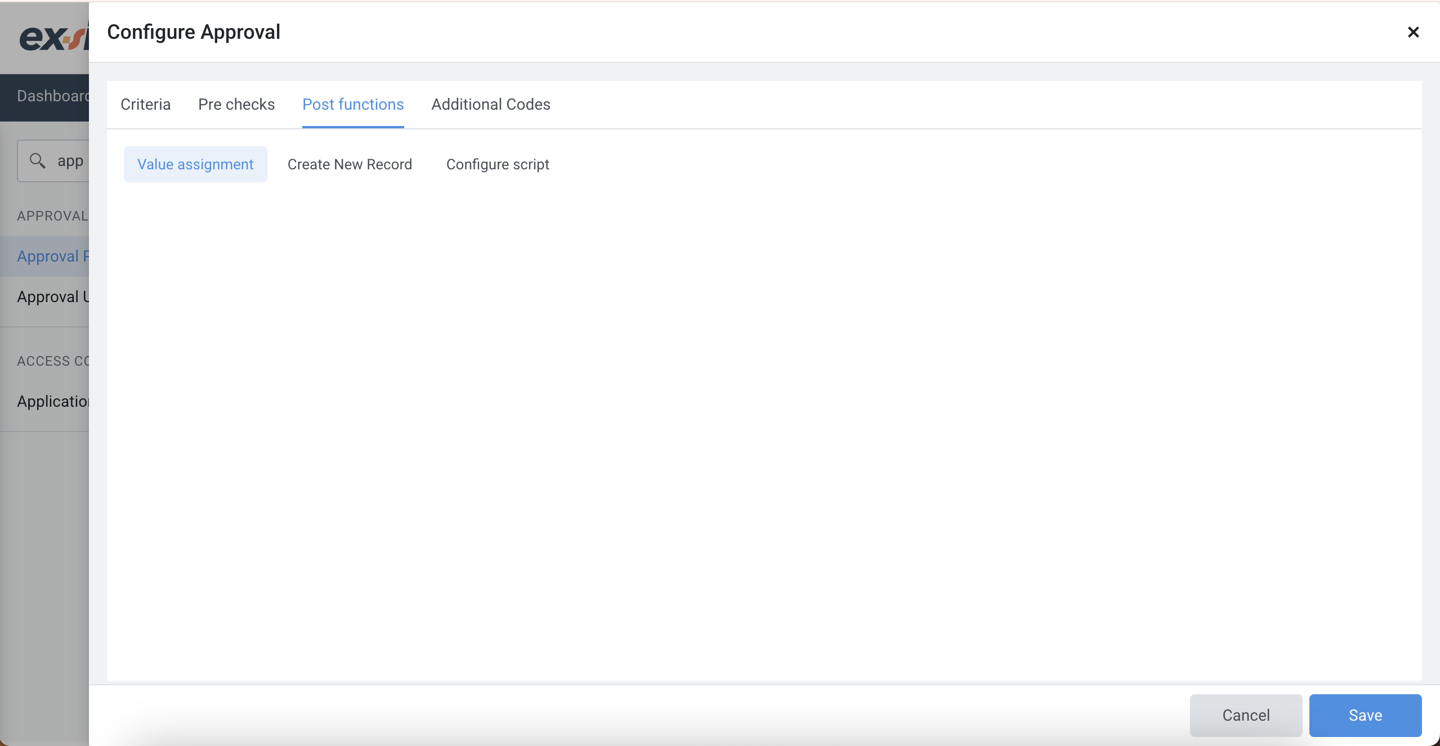
Tab 4: Additional Codes (Advanced Customisation)
This area supports advanced use cases such as:
- Integration with external APIs
- Executing system-level scripts
- Inserting conditional workflows
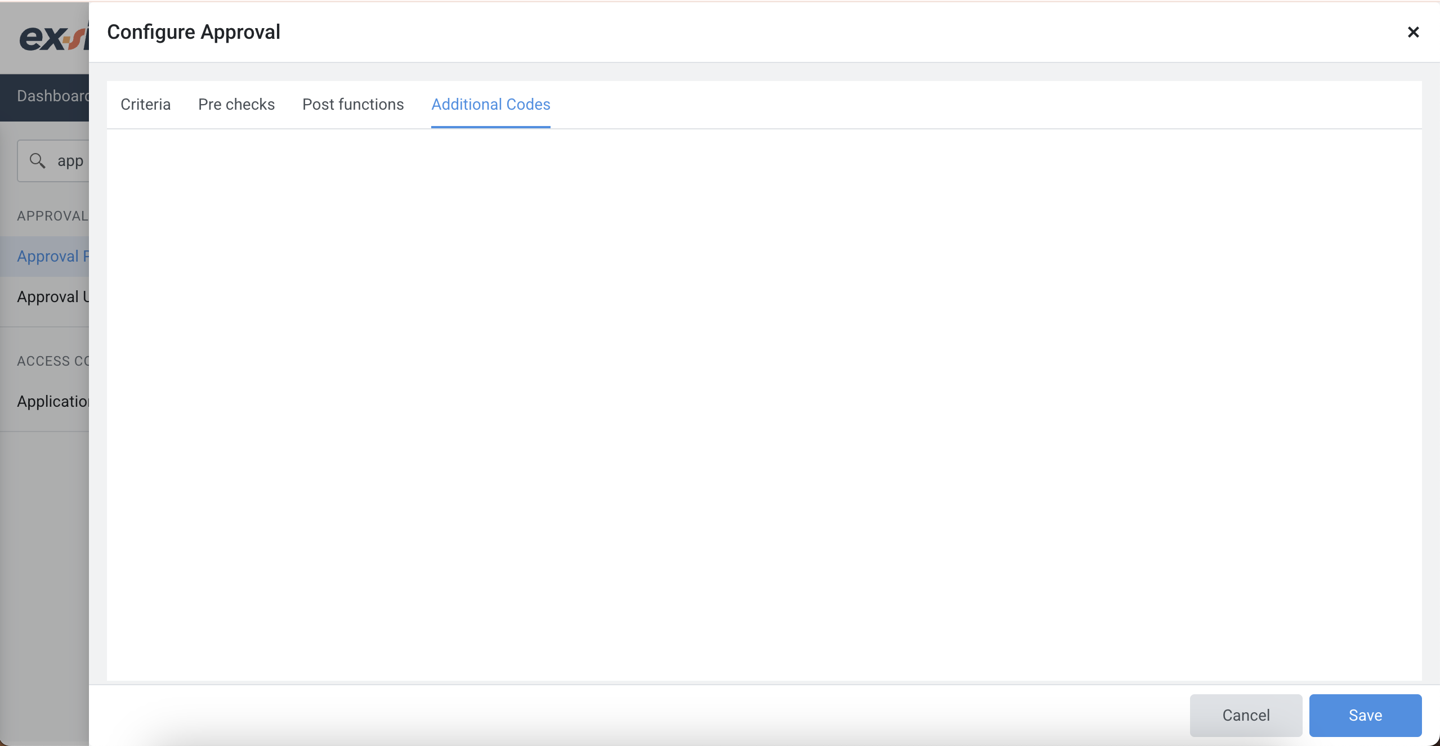
Example Use Case – Purchase Order Approval
Scenario: All purchase orders above $5,000 in AUD must be approved by the Procurement Manager group before proceeding.
| Setting | Value |
|---|---|
| Applies To | Purchase Order |
| Function | Create |
| Criteria | Currency = AUD AND Amount > 5000 |
| Approver Type | User Group |
| Approver | Procurement Manager Group |
| Approver Model | Sequential |
Best Practice Recommendations
- Always use clear and consistent naming conventions for profile names.
- Group similar approval profiles logically (e.g., by module or department).
- Combine criteria and pre-checks to ensure data integrity and relevance.
- Use the Copy function to save time when creating multiple profiles with similar structures.
- Regularly review approval logs and last used timestamps to remove outdated rules.
- Ensure there is always an active approver to avoid system blocks or delays.